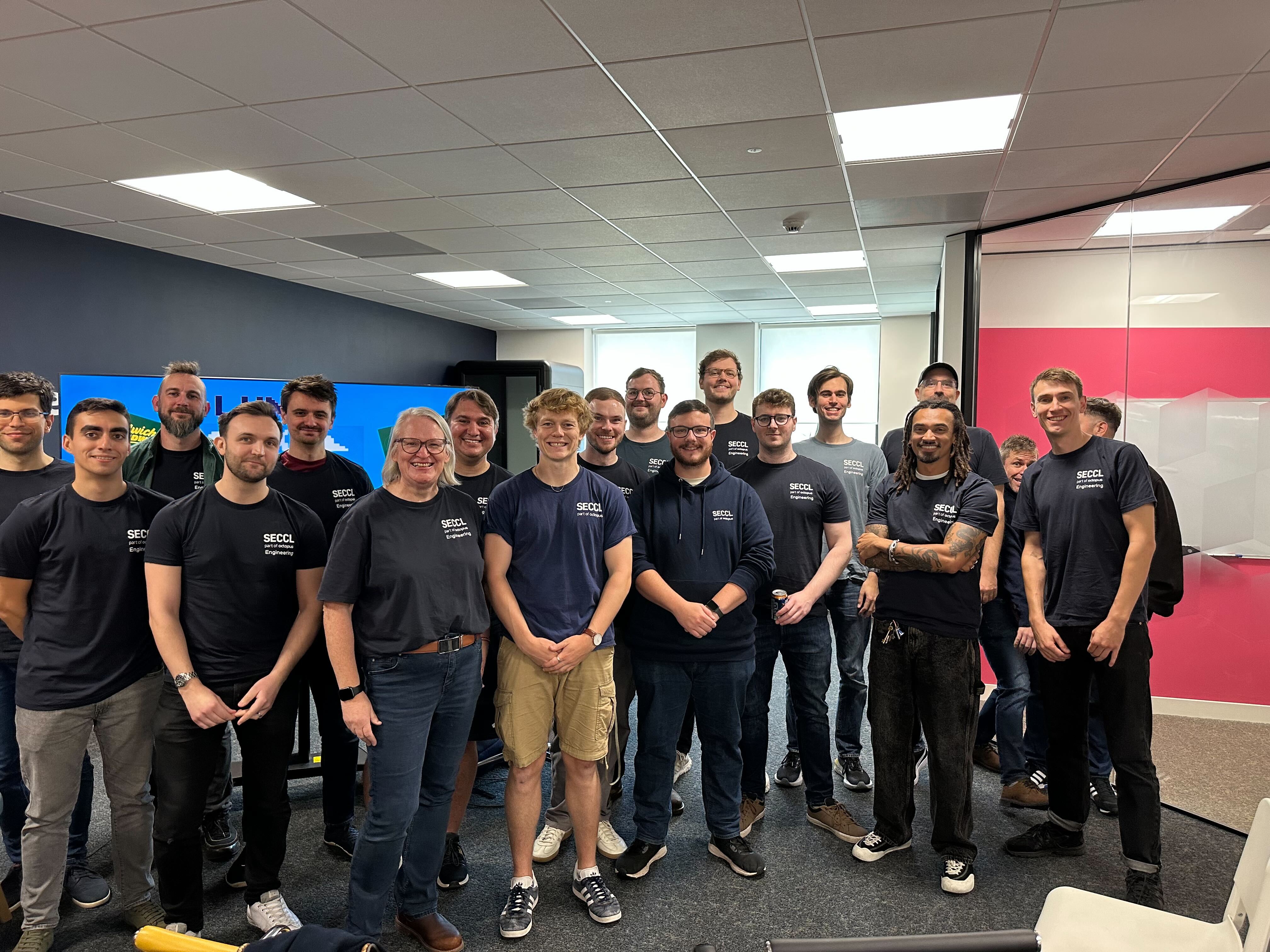At Seccl, we talk a lot about pace. But for us, speed is more than just shipping fast. It’s about progress with stability. It means getting valuable features into production quickly, without compromising on quality. And responding fast to changing customer needs, market shifts or regulatory updates, but in a reliable, dependable way.
If you caught our H1 development campaign, you’ll have seen how much we delivered in just six months – from major new features to under-the-hood improvements. And if you’ve read our recent roadmap blog, you’ll know we’ve got plenty more coming. So how do we keep moving at this pace, while staying consistent, resilient and in control?
We asked Lorraine Pearce, our director of engineering, how her team makes it happen…
Culture of pace, ownership and learning
First up, we keep things small and simple. The simplest solution that works gets us into production faster, and breaking work down into small chunks makes it easier to test, review and ship safely. Every change goes through automated tests and peer review, so quality is built in from the start. And from there, we iterate. We’re not afraid to rethink and rebuild when needed.
Automation does the heavy lifting. Our CI/CD pipeline means every new feature can be built, tested, and deployed automatically. Monitoring tools give us real-time feedback on performance and errors, while logs, metrics and traces help us spot problems early. Together, these let us focus on building features, rather than worrying about manual steps. And when issues do crop up, we fix them fast and run blameless reviews to learn from them.
Ownership is another key ingredient. Unlike many traditional players in the industry, we put far more trust in our teams and in automation. We operate on a you build it, you run it principle. If you ship something, you’re responsible for it. That way we naturally balance speed with care, because no one wants to create headaches for themselves further down the line. In the Custody Tribe, our motto is: Move fast, but don’t f*** it up!
And decisions are made at team level wherever possible – with engineers, product managers and ops teams collaborating directly, so questions get answered quickly without layers of approval.
For me, it’s that openness that makes the biggest difference. If something comes up, we talk about it and fix it. And you’re never on your own – there’s always someone ready to help.
It’s collaborative, fast and pragmatic – three words I’d use to sum up the Seccl dev vibe.
Architecture built for scale and speed
Culture alone won’t get you moving fast – the technology must support it, too. Our architecture is designed from the ground up for speed, scale and resilience.
We’re API-first and event-driven, with a modular, composable design. Each component is independent, interoperable and reusable. That way, changes can be made quickly and safely, with any impact limited to a small part of the system. Instead of big-bang releases, we deploy multiple times a day – with automated checks giving us confidence that every change is safe.
Many traditional players run multiple code branches for different clients, duplicating effort and slowing everything down. At Seccl, we run a single instance of our code base. That means we build once, then deploy instantly and securely to all clients. Whether it’s a new feature, a regulatory update or a performance improvement, we can deliver it at pace.
Being 100% cloud-hosted within AWS gives us scalability - we can ramp up or down in real time, depending on demand, without provisioning new hardware. It keeps us fast and stable – even as we grow.
We also believe in using best-in-class tools wherever possible. OKTA handles authentication, and Datadog gives us monitoring and observability. Our code base is predominantly Node, React and Typescript. We use MongoDB and S3 for datasets, Redshift for data warehousing, and Looker for data visualisation.
All of this adds up to an architecture that’s designed to adapt. Modern, API-first, cloud-hosted – it lets us deliver faster and scale more confidently than traditional incumbents weighed down by legacy systems.
Why it matters
Ultimately, speed matters because it benefits our customers. When we move quickly, they can too. Whether it’s launching a new proposition, scaling faster than planned, or adapting to regulatory change, our clients can trust that we’re keeping pace – and helping them stay ahead.
And that’s what makes the work so rewarding. It’s a real testament to what happens when you combine culture, architecture and an amazing team.



